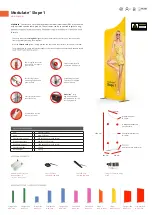
Why You Need A Compressor
A remarkable feature of the human ear is that it can detect an extremely wide range of amplitude
changes - from the slightest whisper to a deafening clap of thunder. If one tries to record or reproduce
this wide spectrum of sound with the help of amplifiers, cassette recorders, records, or even digital
recorders, one is immediately restricted by the physical limitations of electronic and acoustic sound
reproduction technology.
The useable dynamic range of electronic audio equipment is limited as much at low levels as at high
levels. The thermal noise of electrons in the components results in an audible noise floor and thus rep-
resents the bottom limit of the transmission range.
The upper limit of useable dynamic range is determined by the levels of the internal operating voltages;
if they are exceeded, audible signal distortion is the result. Although in theory the useable dynamic range
sits between these two limits, it is considerably smaller in practice, since a certain reserve must be main-
tained to avoid distortion of the audio signal if sudden noise peaks occur. Technically speaking, we refer
to this reserve as headroom--usually about 10-20dB. A reduction of the operating level would allow for
greater headroom, i.e. the risk of signal distortion due to high level peaks would be reduced. However
at the same time, the basic signal to noise ratio of the program material would be increased significant-
ly. It is therefore useful to keep the operating level as high as possible without risking signal distortion
in order to achieve optimum transmission quality. It is possible to further improve the transmission qual-
ity by constantly monitoring the program material with the aid of a volume fader, which manually
changes the level of the program material. During low passages the gain is increased, and during loud
passages the volume is decreased. Of course it is fairly obvious that this kind of manual control is rather
restrictive; it is difficult to detect signal peaks and almost impossible to level them out. Manual control
is simply not fast enough to be satisfactory.
The need therefore arises for a fast acting automatic gain control system which will constantly monitor
the signals and which will always adjust the gain to maximize the signal-to-noise ratio without incurring
signal distortion. This device is called a compressor or limiter.
3
Summary of Contents for DBX 162SL
Page 1: ...User Manual C o m p r e s s o r L i m i t e r 162SL...
Page 10: ......
Page 18: ......
Page 26: ......
Page 28: ...26...






































